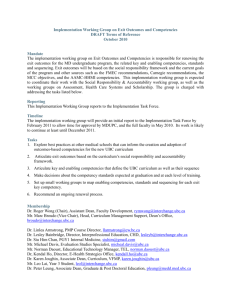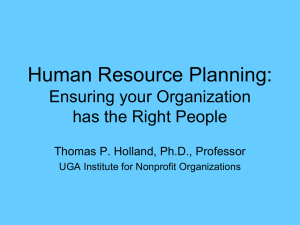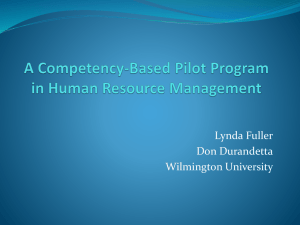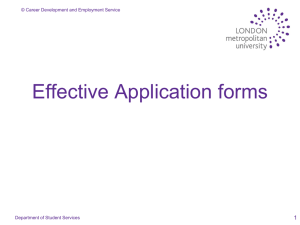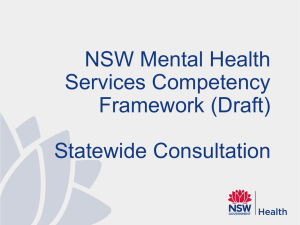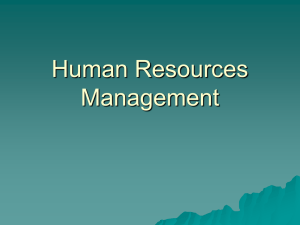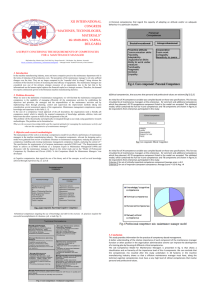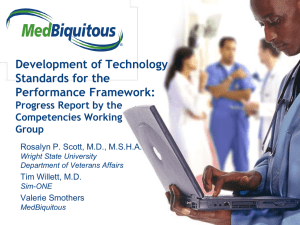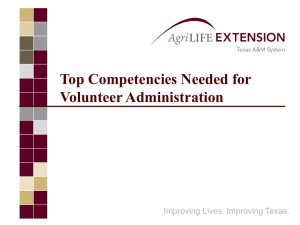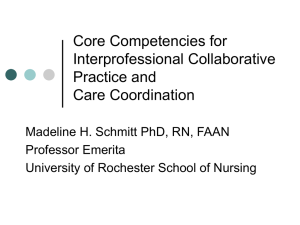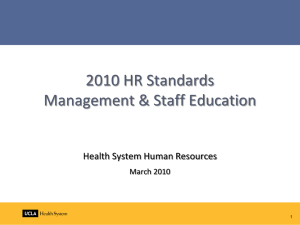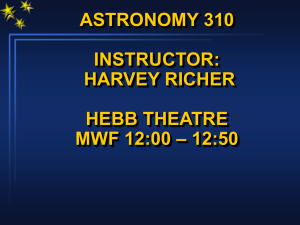Introduction to the IT Career Framework
advertisement
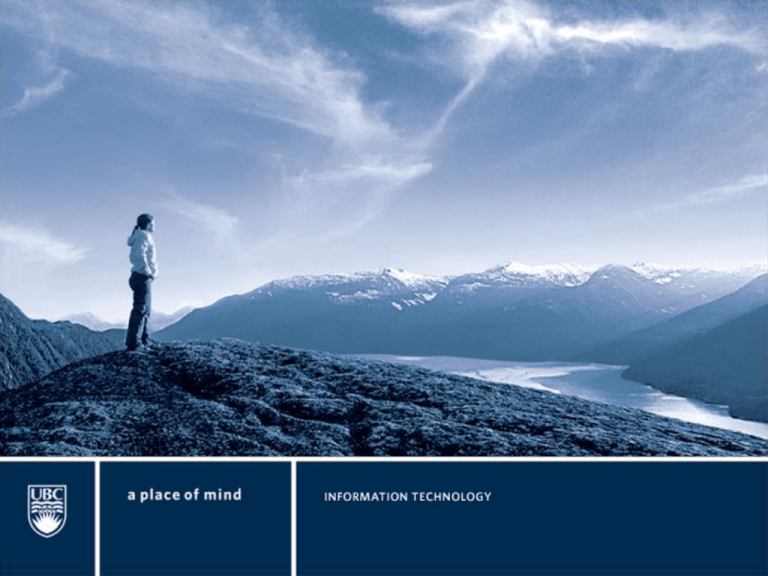
IT Career Framework Imagine…. ….being able to identify how your role fits within the larger picture and being able to identify what skills and knowledge you need to gain to be successful in developing your career within UBC regardless of the department you work in Why align to the IT Career Framework? To help you identify the M&P IS&T career options within UBC to assist you in creating a development plan Allows you to identify what skills, knowledge, experience, qualifications and behaviours are required for progression along any given route. Enables you and your Manager to identify training and development activities relating to both current role and future career choices And to address this…. All these positions do “Desktop Services” 1. PC LAN Analysts 2. Computer Support Specialists 3. User Service Coordinators 4. Systems Administrators 5. Central Service Desk Support Analyst 6. User Service Advisors 7. IT Support Technician 8. IT Research Specialist 9. Central Service Desk Technician Project Scope Aligning to the IT Career Framework will involve all IT Professionals in the M&P IT&S job family. The project will be led by <insert Project Manager name> with assistance from HR <enter HR representative’s name>. We will be: Standardizing position descriptions and titles Introducing competencies required for positions Integrating competencies and personal development planning into our annual review process Guiding Principles 1. M&P IS&T guidelines are followed 2. We will standardize and simplify as much as possible 3. Accommodate customization where necessary – specific duties which may be unique to you or our department 4. This is not an opportunity to re-evaluate compensation, however if there are any overt compensation misalignments, we will address them as we would normally. So….what is a Career Framework? A career framework is a group of many career ladders which allow an individual to move laterally or across career ladders. Allows individuals to: • Expand and improve within their own competencies to a higher level position • Learn new competencies which will allow individuals to move into new professions • Identify where opportunities may exist at UBC for career progression What is a Career Ladder? A career ladder is a grouping of like skills and competencies which allow a person to progress in an organization requiring: • Increasing levels of skill and knowledge • Increasing levels of responsibilities Resulting in increasing levels of compensation Requiring support, guidance from management Ex H G F E2 E D C B A Systems Administration Systems Analysis Support Analyst QA Analysis Project Management Network Analysis Leadership and Management Enterprise Architecture Database Client Svs Business Analysis AV Services Applications Development The Career Framework The Career Framework o 13 career ladders o 8 classification levels based on M&P IT Guidelines o Standard Titles and Job Description Templates created for each position o Each job spans two classification levels based on scope, complexity, consequence of error, supervision etc. o Greyed areas indicate typical times when individuals make career choices to move How titles are derived…. Senior Systems Analyst Level of Area of Function expertise Specialty Analyst I Network Coordinator II Business Technician Senior Applications Representative Project Specialist Communications What is a competency? A competency is defined as a skill, knowledge, ability or behavioral characteristic that is associated with superior performance. There are two basic levels of competencies: technical and behavioral. Technical Competencies are predominately about acquired knowledge and technical abilities and skills. Behavioral Competencies, such as communication skills or team member skills. What are the competencies? Three core competencies across all IT jobs: • Communicating for Results • Problem Solving • Collaboration Each ladder has three role-based competencies from this list: • • • • Accountability Analytic Thinking Building Relationships Business Enterprise Knowledge • Business Process Knowledge • Change Advocate • Developing Others • Information Systems Knowledge • Initiative • Strategic Technology Planning • Thoroughness Competency Proficiency Being Developed: Demonstrates minimal use of this competency; Currently developing competency. Basic: Demonstrates limited use of this competency; needs additional training to apply without assistance or with frequent supervision. Intermediate: Demonstrates working or functional proficiency level sufficient to apply this competency effectively working/functional knowledge of subject matter. Advanced: Demonstrates in-depth proficiency level sufficient to assist, consult to, or lead others in the application of this competency; Expert: Demonstrates broad, in-depth proficiency sufficient to be recognized as an authority or master performer in the applications of this competency Aligning to the career framework Today we provided you with an overview of the career framework. Moving forward, we will cover three main steps 1. Align, review and educate staff on the standardized position descriptions which includes competencies 2. Integrate competencies and career development into current performance review/management process 3. Support individual career development In practical terms, what is career development? 1. Decide what you want from your career now and in the future. This includes identifying your strengths, interests and areas for development. 2. You can then take a look at the framework and determine where you might currently fit into the framework. Assess your current knowledge, skills and competencies both on your own and in conjunction with your manager. 3. Identify what knowledge, skills and competencies you would need to gain to achieve your career goals. 4. Creates an annual personal development plan for discussion with your manager. What does this mean to me? • visibility into what positions exist across the IT community at UBC • ability to determine what competency you can develop to further your career at UBC • greater ability to access skills across the IT community which you may require on a temporary basis – for questions, projects or general assistance • greater equity across positions in terms of standardizing position descriptions, titles, competencies, performance reviews and recognition and reward How can I get more information? 1. Go to www.careerframework.ubc.ca 2. If you have questions email itcareers@exchange.ubc.ca 3. Many other resources available through UBC HR on career development at • www.hr.ubc.ca/odl/ • Funding Opportunities for UBC employees: www.finance.ubc.ca/payroll/benefits/tuition.cfm • AAPS Professional Development Fund: Management and Professional (M&P) employees www.hr.ubc.ca/odl/funding/AAPS.html • Learning Portal: www.hr.ubc.ca/learning/ What is the next step? Review of current job descriptions. Determining which job description in career framework best aligns. Updating job description with specific tasks you do to ensure it accurately captures what you do.



